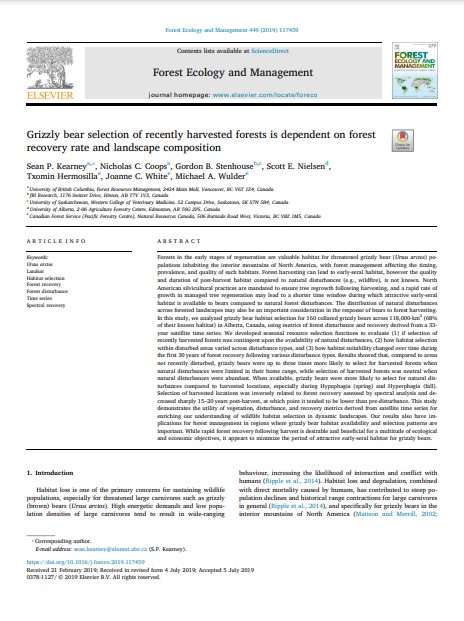Grizzly bear selection of recently harvested forests is dependent on forest recovery rate and landscape composition.
Bosque Modelo:
Foothills
Temática:
Conservación
Tipo de documento:
Artículo científico
Resumen
Forests in the early stages of regeneration are valuable habitat for threatened grizzly bear (Ursus arctos) populations inhabiting the interior mountains of North America, with forest management affecting the timing, prevalence, and quality of such habitats. Forest harvesting can lead to early-seral habitat, however the quality and duration of post-harvest habitat compared to natural disturbances (e.g., wildfire), is not known. North American silvicultural practices are mandated to ensure tree regrowth following harvesting, and a rapid rate of growth in managed tree regeneration may lead to a shorter time window during which attractive early-seral habitat is available to bears compared to natural forest disturbances. The distribution of natural disturbances across forested landscapes may also be an important consideration in the response of bears to forest harvesting. In this study, we analyzed grizzly bear habitat selection for 160 collared grizzly bears across 118,000-km2 (68% of their known habitat) in Alberta,
Información Bibliográfica
Autor:
Kearney, S. P., Coops, N. C., Stenhouse, G. B., Nielsen, S. E., Hermosilla, T., White, J. C., & Wulder, M. A.
Revista:
Forest Ecology and Management
Año:
2019
N°:
-
País :
Canadá
Páginas:
-
Volumen:
449
Idioma:
Ingles
Palabras claves
Ursus arctos Landsat Habitat selection Forest recovery Forest disturbance Time series Spectral recovery





